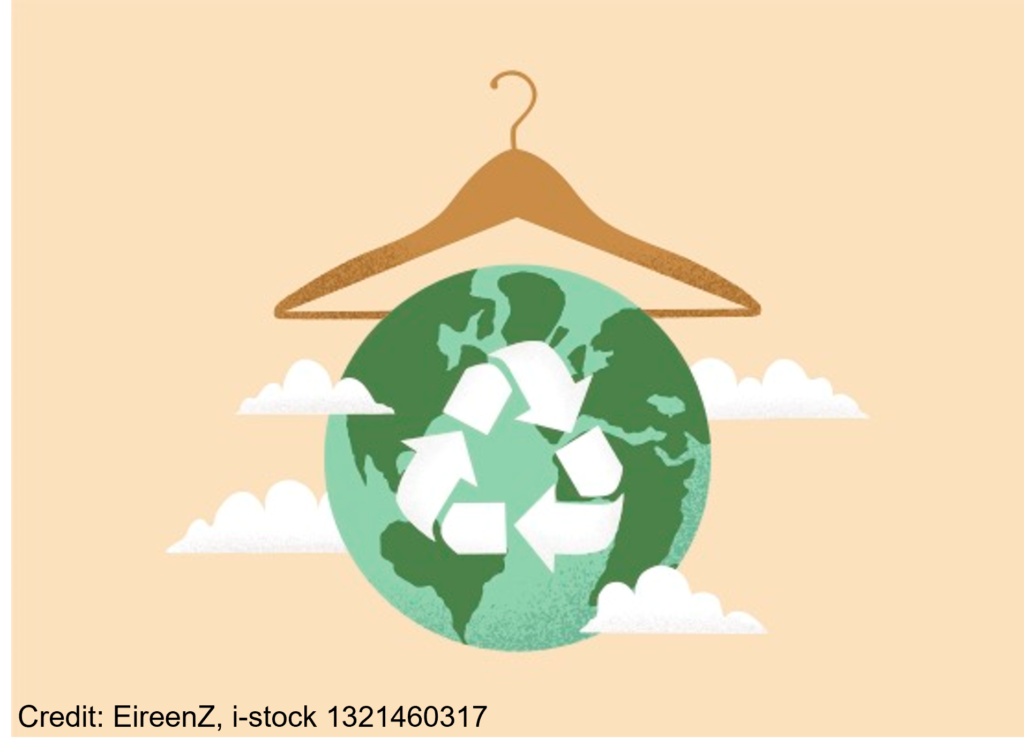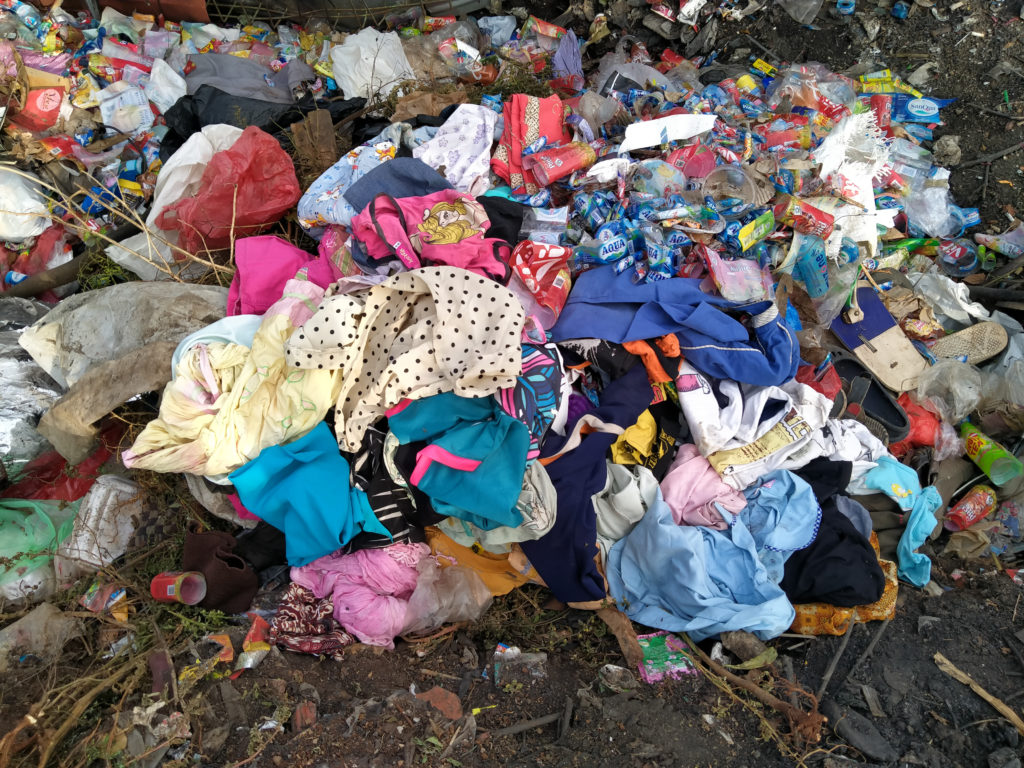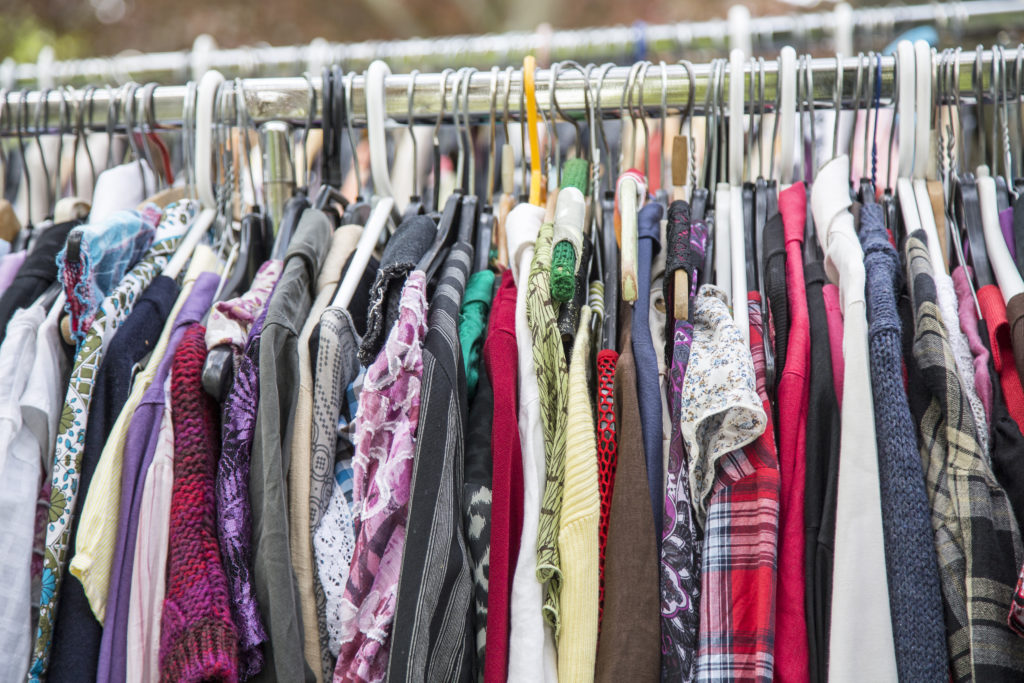
Slow and Steady Fashion Wins the Race
By: Lexi Schaffer
Slow fashion is an approach branded by many as outdated – handcrafted, durable clothing, meant to be passed down and worn from generation to generation. In recent years, it has been replaced by fast fashion: mass-produced garments, meant to be thrown away in mere months after a trend fades or a sleeve rips. So how does this shift in manufacturing impact the environment, and why should we all make the switch back to slow fashion?
To answer this question, we must examine the true meaning of the words ‘fast’ and ‘slow’ in this context. Most people have heard of fast fashion clothing brands: chain stores that replace their stocks weekly or even daily, constantly pushing out new products. But how does the fast fashion industry manufacture its clothing, and what happens to the garments that are no longer on ‘trend?’ Fast fashion clothing is mass-produced in factories where pesticides, bleach, dyes, and other harmful chemicals are worked into the garments. These chemicals can be leaked into rivers, lakes, and other bodies of water. The textile waste from manufacturing companies has upturned entire ecosystems and polluted previously clean waterways, and they account for one-fifth of global water pollution from the industries. Manufacturing plants also release substances such as soot and carbon dioxide into the air. In fact, in China alone, 3 billion tons of soot are estimated to have been produced by manufacturing plants (see NRDC for more details). Textile factories across the world are rapidly deteriorating our precious environment with the sole goal of producing quick, cheap, trendy clothing.

When these cheap yet environmentally costly garments finally hit the stores, their lives are disturbingly short. They are discarded by shoppers and stores after the low-quality material wears down or the current fashion trends fade. Regardless of the journey they take, most of the garments end up in the same place: landfills, impossibly high piles of discarded items never to be used again. Beyond being massive eyesores, landfills are
detrimental to the environment – most rubbish decays very gradually, releasing acidic chemicals in the process. These chemicals can seep into the ground, poisoning the area for future farming, plant life, and animal life. They can also combine with liquids, forming a substance known as leachate, and eventually evaporate into gases, further polluting our already fragile atmosphere (see Unisan for more details). Some discarded textiles make it into incinerators before they can decay, but this process releases gasses of its own, many of which are toxic to our environment.
How can we fight this massive industry? Arguably, the most direct way for an individual to reduce the environmental impact of the fashion industry is to switch to slow fashion. Slow fashion is the age-old approach to producing durable, long-lasting clothing. Garments are locally handcrafted with natural materials, creating safer, more resilient clothing than could be produced using the fast fashion approach. The clothing is then worn for many years and passed down from one generation to the next. This process results in less clothing being purchased, which amounts to fewer textiles being discarded in landfills or incinerated. Instead of buying many cheap garments that wear out quickly, consumers can buy one high quality piece of clothing that lasts them for many years, and, in the long run, saves them money. Investing in second hand clothing is also a method of participating in the slow fashion movement. By buying used garments from other people, consumers can discourage new clothing from being made, sold, and eventually wasted.
Reducing your fashion footprint starts with just a few small steps. The next time you are at the mall or shopping online, think about where you are getting your clothing from. Large brands such as H&M and Shein are staple fast fashion companies. If possible, search for alternative places to purchase your clothing. A fun and rewarding way to acquire garments without harming the environment is thrifting. At stores such as Goodwill, you can buy high quality

clothing for low prices. Slow fashion is a great method to protect the environment, but it is also a reliable way to retain the colorful culture related to fashion. Fast fashion mass produces the same garments, creating a sea of people dressed in the same colors and styles. Slow fashion encourages consumers to wear unique, cultural, generational clothing, maintaining various cultures, styles, and modes of expression. A different way to approach slow fashion is to not buy new clothes at all. Learning skills such as sewing allows individuals to repair clothing instead of replacing it. Slow fashion means something different for everyone, but whether it means giving away old clothing, buying second hand clothing, repairing clothing, or another method, there is always a way to acquire garments without harming the environment (for more information on slow fashion, see techfashonista).
Slow fashion is an easy and fun way for us to protect our precious home. So, the next time you need to buy a new piece of clothing, ask yourself – how can you contribute to the slow fashion movement?

